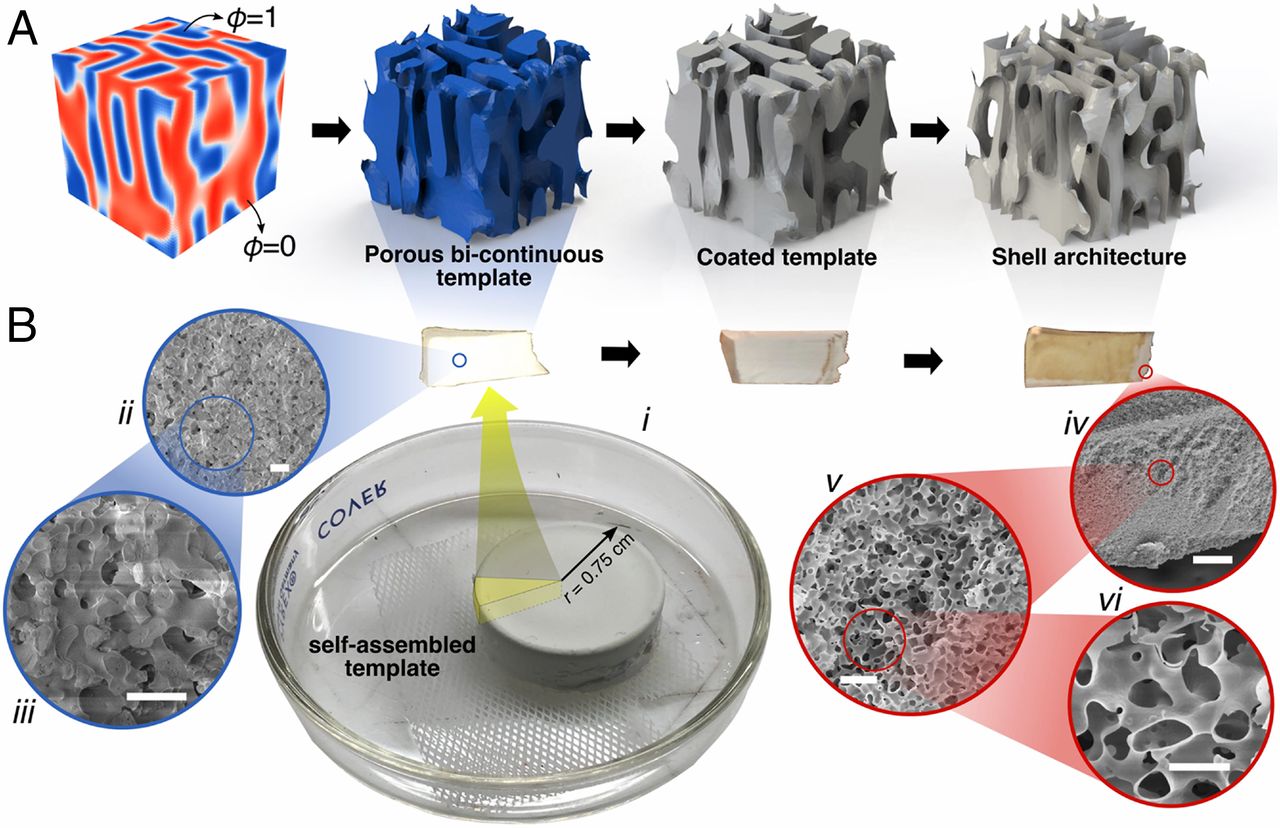Spinodal Architectures
Spinodal decomposition is a process by which a mixture of phases separates over time into two monolithic phases (think of, e.g., two fluids like oil and water or - technologically more important - polymer blends or mixtures of molten metals that gradually separate by diffusion). The shapes of the resulting architectures of the two monolithic phases are goverened by the specifics of the phase separation process and, among others, can be influenced by anisotropy (i.e., direction dependence) of the interface energy or phase mobility. By external page simulating the spinodal decomposition process, we explore the relation between mixture properties and resulting architectures and seize avenues to exploit that link for the generation of metamaterials with as-designed anisotropic properties.
Spinodal metamaterials cover a large and seamless range of anisotropic topological and mechanical properties, as demonstrated, e.g., by their tailorable anisotropic elastic moduli. This allows us to create materials that are stiff in some directions and soft in others. Spinodal topologies consist of smooth, non-intersecting, and bi-continuous surfaces that avoid points of stress concentration (in contrast to truss- and plate-based metamaterials) while also showing excellent scaling of stiffness and strength with respect to density (leveraging the benefits of doubly-curved surfaces that engage slender structures primarily in stretching rather than bending). The non-periodicity and lack of symmetry in spinodal topologies furthermore make them more external page resilient to fabrication-based symmetry-breaking defects - by contrast to periodic metamaterials whose sensitivity to defects typically deteriorates their mechanical properties. The non-periodicity also offers unprecedented opportunities for spatially-variant architectures for functional grading without issues arising from unit cell tessellation and discontinuous topologies (which, in contrast, is an active challenge for periodic topologies including trusses, plates, and shells).
We specifically explore the spinodal decomposition process to create spinodal (or spinodoid) architectures with tailorable and beneficial mechanical and physical properties. This includes both experiments (in collaboration with external page Prof. Julia R. Greer at Caltech) and simulations towards the optimization and inverse-design of new architectures.

